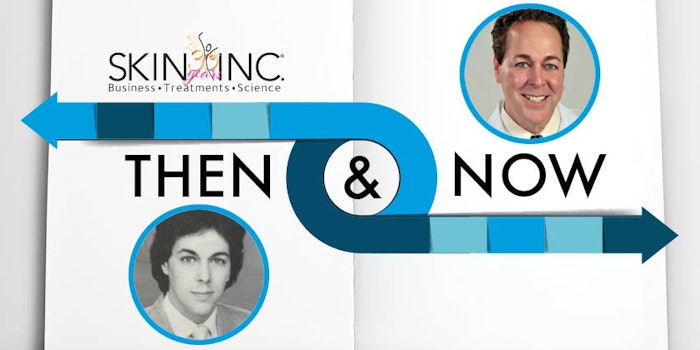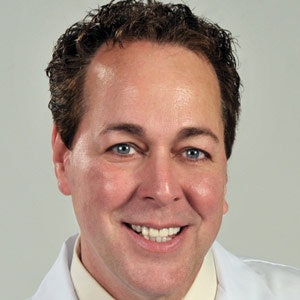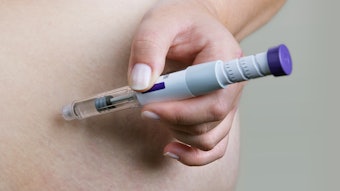
Revisiting this article almost three decades later, many clients still have oily skin, clog-prone and acne-prone skin. We have more knowledge about acne-prone skin and more effective treatments now. In this article, let’s look at changes since 1989.
Oily Skin Causes
Oiliness levels are primarily determined by genetics and hormones. Oil gland size, distribution, numbers and productivity is largely genetic. Male (androgenic) hormones are responsible for surges in sebaceous secretion. The hormones in the bloodstream come in contact with the sebaceous glands and biochemically stimulate the sebocytes, the specialized cells that comprise the sebaceous glands.
Retention hyperkeratosis is also genetic. Instead of cells shedding from the epidermis, they pile up and then are coated with sebum, causing follicle walls to thicken. This process is the cause of clogged pores, but the congestion also blocks aeration of the follicle, resulting in an ideal environment for anaerobic Propionibacterium acnes (P. acnes) bacteria to proliferate unchecked.
Hormonal fluctuations, especially in females, are the cause of premenstrual acne flares, especially in the lower face. In 1989, large-dose oral contraceptives were still being used, and they produced stronger acne side effects than today’s lower dose contraceptives. During these flares, the sebaceous gland produces significantly more sebum, increasing oiliness, and also causing inflammation in the follicle. It is the combination of increased oiliness and inflammation, along with P. acnes bacteria (that are part of the microbiome in all pilosebaceous follicles, and proliferate when excess oil and inflammation are present) that are responsible for sudden flares of papules.
Life stress causes production of cortisol in the adrenal glands. In women, the adrenal glands also secrete the majority of androgenic hormones. So when a female client is under excessive stress, it makes acne worse since this may increase oiliness, and also potential acne flares.
Food and Skin
There is so much misinformation out there about foods and acne. There are really only three categories of foods that may affect acne, and there are circumstances with each category.
Dairy. There is some evidence that dairy products may cause problems for some women. This is not due to the product itself but rather hormones from the cows Only some women seem to be affected by this. There is a simple test to see if dairy affects a client’s skin. Have the client stop all dairy products including yogurt, ice cream and cheese for 6-8 weeks. If they see substantial improvement in their acne, the dairy likely affects their skin. If they see no change, dairy consumption probably does not affect them.
Carbs. In one major study, patients with acne who had high carb intake (sugars, starches, snack food, breads, pasta, potatoes, etc.) and were placed on a low-carb food plan saw improvement in their acne-prone skin. This has been theorized to also be connected to hormonal normalization in the blood. High-carb diets affect insulin levels, which can affect other hormone levels in the body.
Iodide. This is rare, but large amounts of high-iodide foods may cause acne flares. High iodide foods include kelp, seaweed, beef liver and shellfish in large amounts. Be aware that some natural supplement pills are kelp-based, so watch these also if a client thinks they may have a food problem. Again, this is a rare occurrence.
The bottom line of foods and acne is that if a client seems to think they are affected by a certain food or food group, have the client avoid that food for 6-8 weeks and observe if there is a change in the skin condition.
Contemporary Treatment
Today’s standard treatment plan for oily and acne-prone skin includes proper cleansing techniques, use of daily chemoexfoliants and avoidance of topical (skin care and makeup products) products that are either comedogenic or acnegenic.
Are Soaps Bad?
Soap is less used for facial cleansing these days, and many people with oily and acne-prone skin have switched to rinseable liquid cleansers. Rinseable cleansers contain surfactant ingredients that help remove excess sebum.
There is a direct correlation between the amount of sebum a patient’s skin produces and the likelihood of acne severity. It is important to rid the skin of excess sebum, but also to be careful not to strip so much sebum that it leaves the skin dry and irritated. This irritation can actually make acne worse in some patients.
Every esthetician should carry several strengths of foaming rinseable cleanser and should carefully choose the best strength of cleanser for the individual client’s skin. These cleansers vary in strength due to differences in surfactant content, and the addition of other ingredients such as benzoyl peroxide or salicylic acid. The cleanser should do a good job removing excess sebum without leaving the client feeling dry and tight, or reddened and inflamed.
Emulsion type cleansers should be used for makeup removal, as they do a better job than rinseable products in removing makeup, but they also can leave oily and occlusive residues. After the makeup is removed, the clients should then perform a second cleansing with the foaming rinseable cleanser product.
Chemoexfoliation
Daily application of a chemoexfoliant product to all oily and acne-prone or clog-prone areas of the face help to break up current impactions, flush the follicles, loosen comedones and prevent new comedones from forming. Alpha hydroxy acid (AHA) and beta hydroxy acid (BHA) gel-serums, benzoyl peroxide gels and retinol all can help accomplish this. The client must use this daily and treat entire affected areas even if they are not currently flared to keep preventing new impactions from forming. The choice of key ingredient will vary with the acne severity. In oily clog-prone skin, AHA/BHA gel may be the best choice. In cases with more active acne with multiple papules and pustules, a combination of AHA/BHA and benzoyl peroxide may be more effective.
Comedogenicity and Acnegencity
Cosmetic and skin care chemists have made great strides in formulating better products for acne-prone skin. The advent of new silicone-based ingredients and polymers has reduced the need for fatty spreading agents.
Comedogenicity is the tendency of a product or ingredient to cause more hyperkeratosis in the follicle resulting in eventual impactions and comedones. It is caused mainly by fatty ingredients, oils, fats, waxes and fatty derivatives used as spreading agents.
Acnegenicity refers to the tendency of product to cause inflammation in the follicle that can cause sudden over-night flares of papules. The biggest problem in product chemistry for acne-prone skin at this point is acnegenicity. Acnegenicity can be caused from fragrances, stimulants, high or low pHs, surfactants, some oils and other ingredients not appropriate for acne-prone skin
Any esthetician treating problem skin should have an excellent working knowledge of comedogenicity and acnegenicity. The best treatment available for acne-prone skin can be ruined by clogging fatty ingredients. Estheticians should look for products that have been independently dermatologist-tested for irritancy and acnegenicity.












